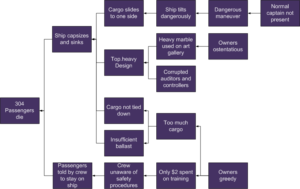Are the 5 S applicable to service management? What could the 5 S, originating in the management of the workplace in a factory, mean for service management? The 5 S are generally represented in English as Sort, Systematic Arrangement, Shine, Standardize and Sustain. These terms are derived from the Japanese Seiri ( 整理 ); Seiton […]
Service Management
Suppliers and SPAM
I am convinced that the trend toward complex outsourcing arrangements is like the nutmeg of consolation. You’re better off sailing on the main with your own crew and not be married to a harem of third parties. While looking through some old trunks in my attic, I recently found the following hitherto unpublished manuscript that […]
ITIL à la Seuss
Aprill Allen asked if we could represent ITIL or any part thereof in the style of Dr. Seuss. Here is a modest contribution. For those of you who were not raised on the tales of the good doctor, you may wish to read “And to think that I saw it on Mulberry Street“, first.
Is service value really, truly delivered?
Services participate in the creation of value in five different ways. It is useful to understand these different paths to value, as each has its own optimization techniques. I call these five types of value market value, business value, returned value, relationship value and replacement value.
The diversity of risk management
In another article, I spoke of vision management and risk management as the two pillars upon which organizations reside. As I have already spoken about vision, let’s take a minute to examine risk in the context of service management in a little more detail.
Be proactive like a true pro
Some organizations consider proactive problem management to be the work of resolving problems when they are not currently causing any incidents. This understanding is in direct conflict with an alternative interpretation, wherein proactive problem management concerns the identification and resolution of problems before they have caused any incidents at all.
The Goal of Incident Management
ITIL®‘s version of the goals of incident management According to the latest version of ITIL®, the goal of incident management is “…to restore normal service operation as quickly as possible and minimize the adverse impact on business operations…”¹ So there are really two goals mentioned: to restore as quickly as possible and to minimize impact. […]
The Sinking of the Sewol and “Root Cause” Analysis
O why why why why why? Ohno Taiichi provides an oft-quoted example of using the five whys to perform root cause analysis. His neat little scenario of making durable improvements in the operation of an industrial machine gives a misleading view of the reality of understanding the causes of problems. An analysis of the sinking […]







